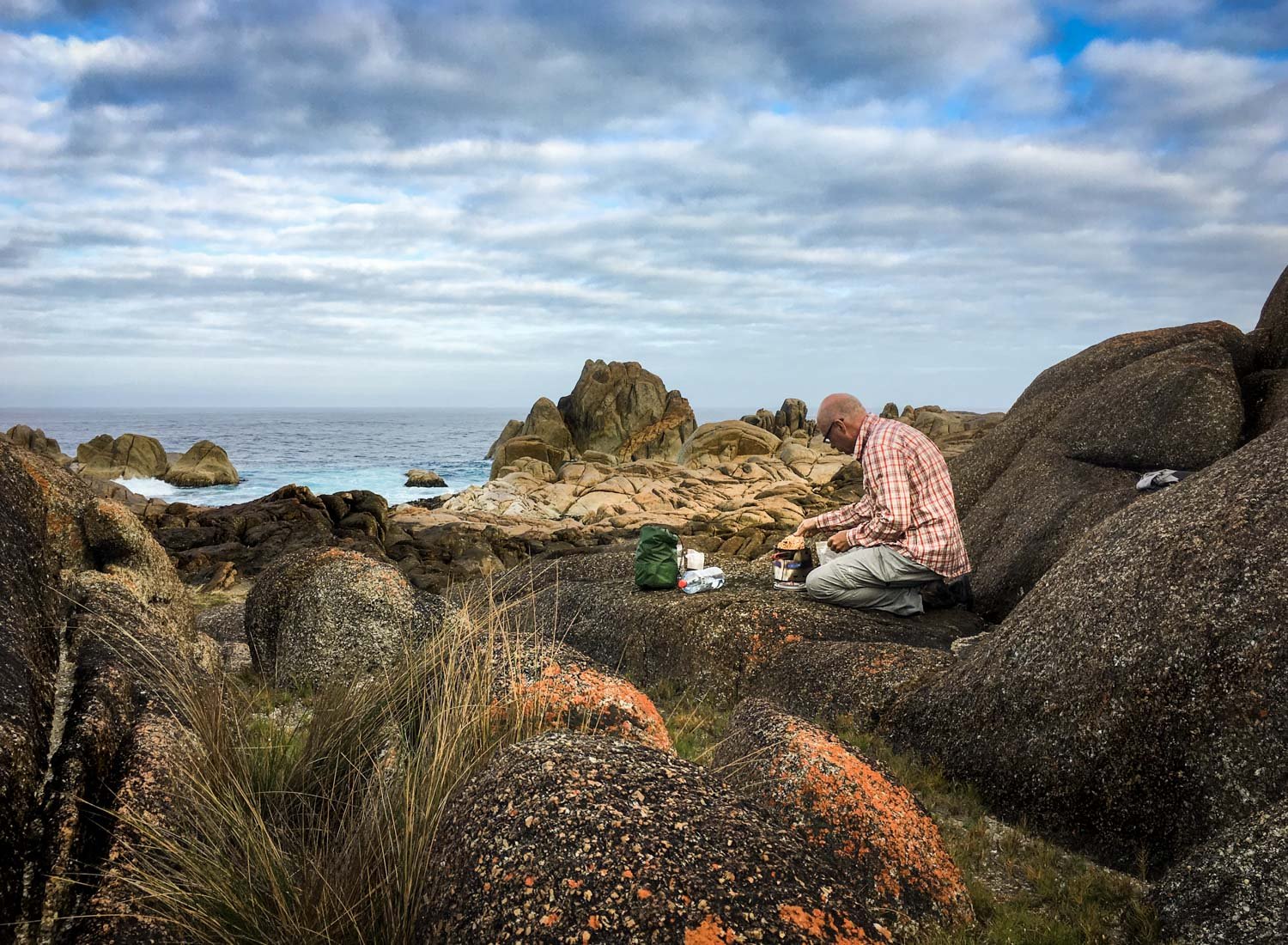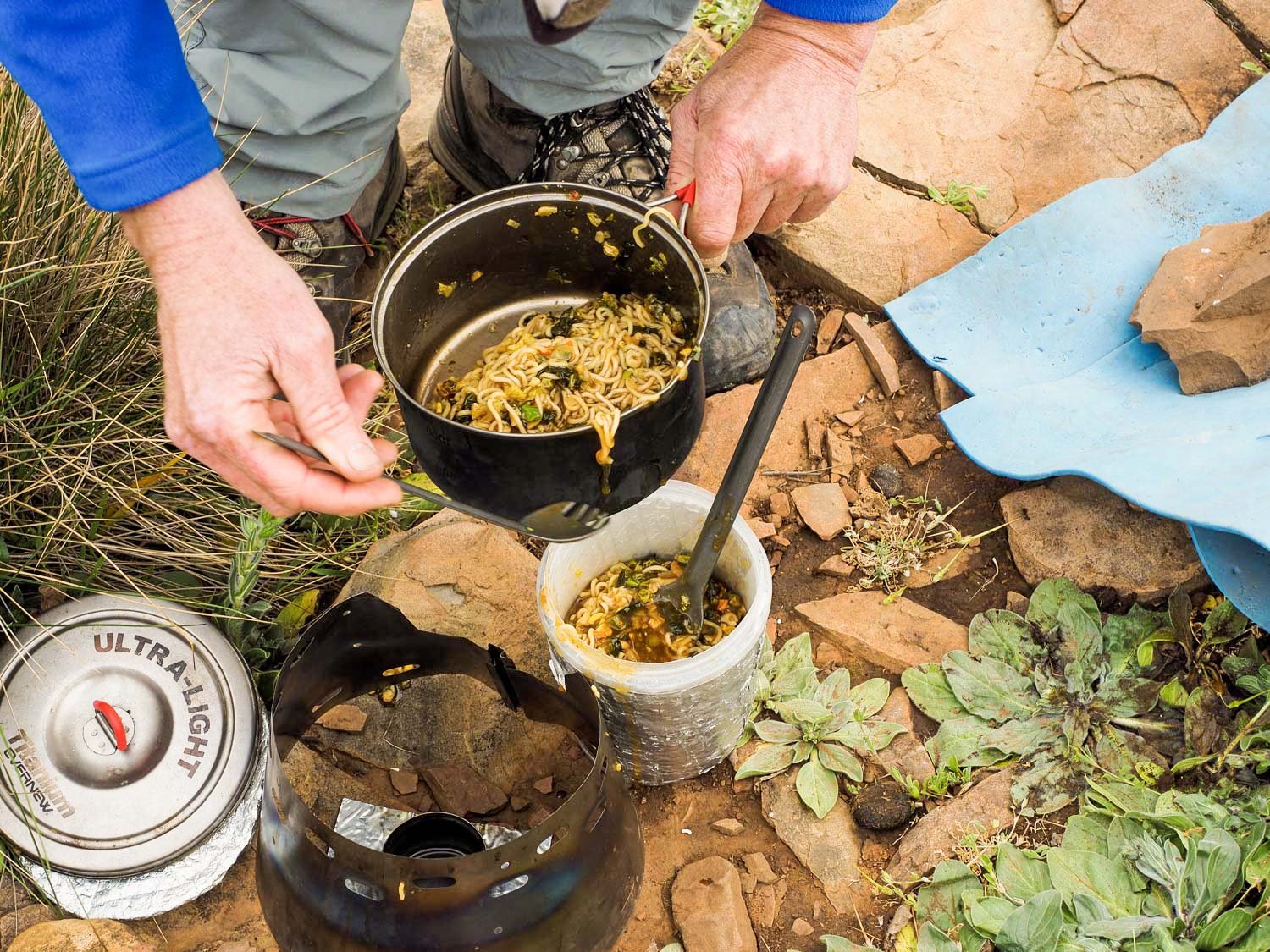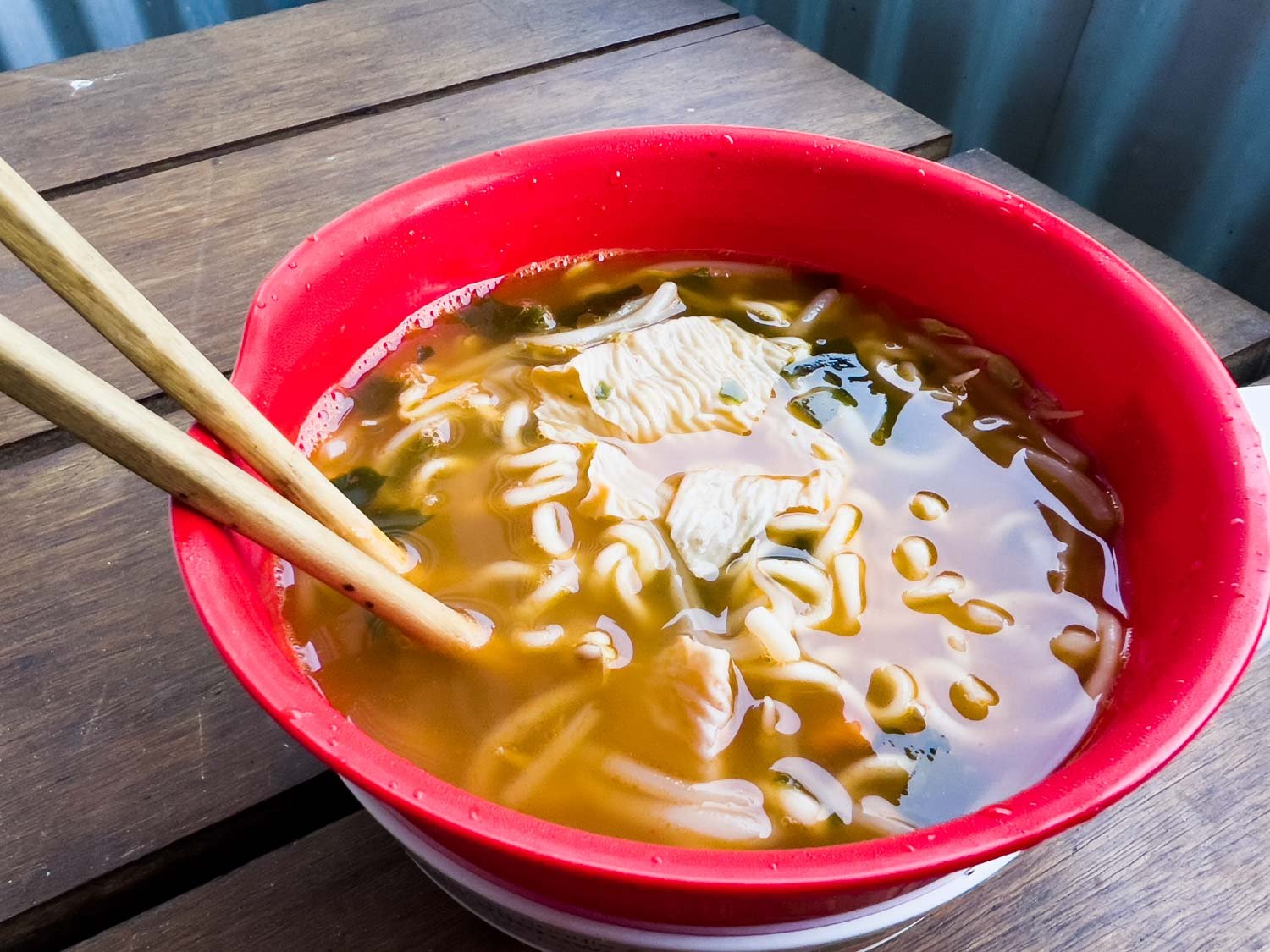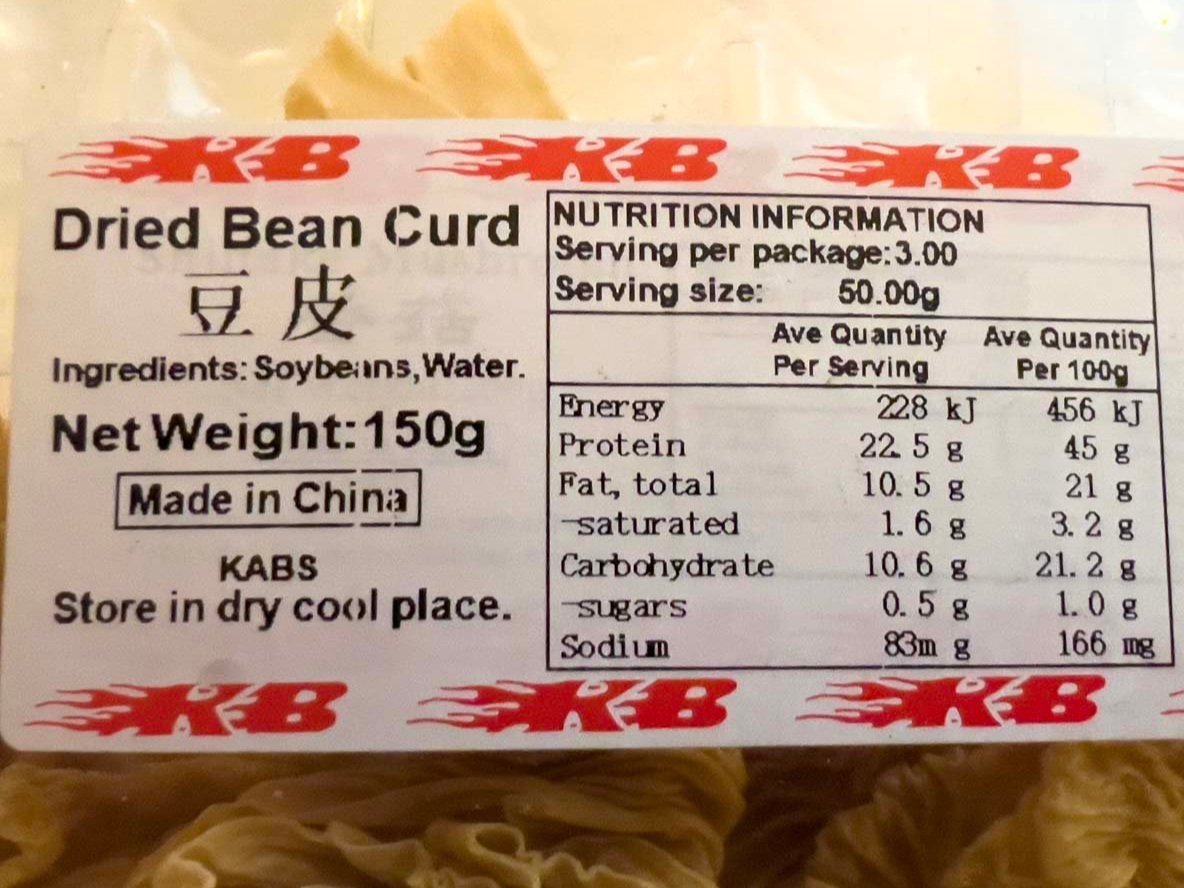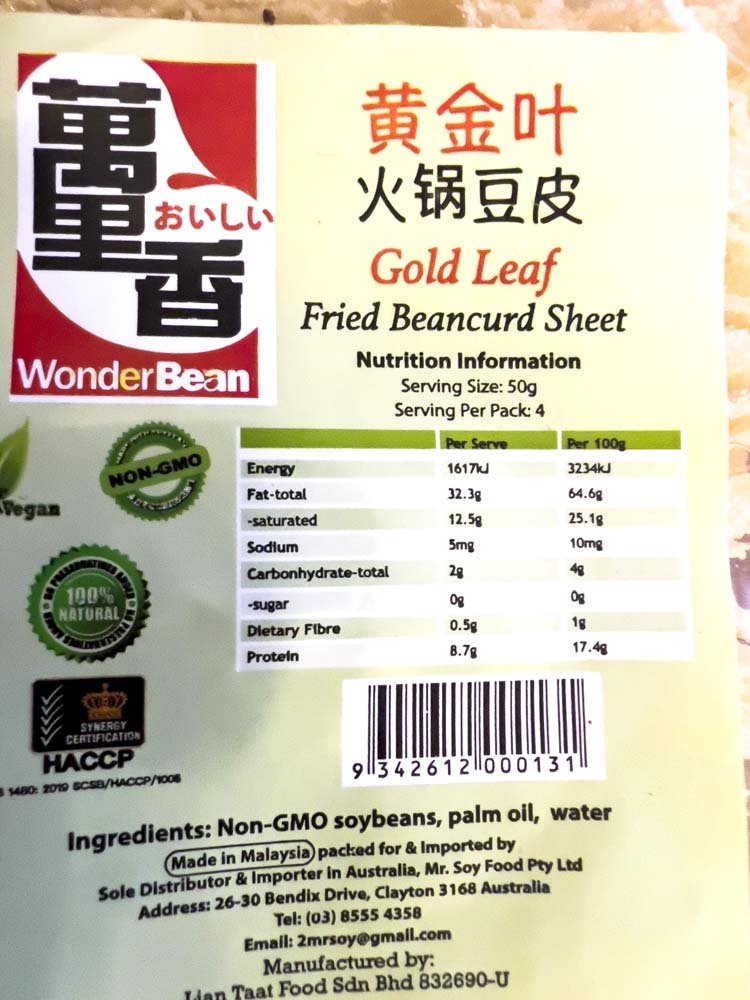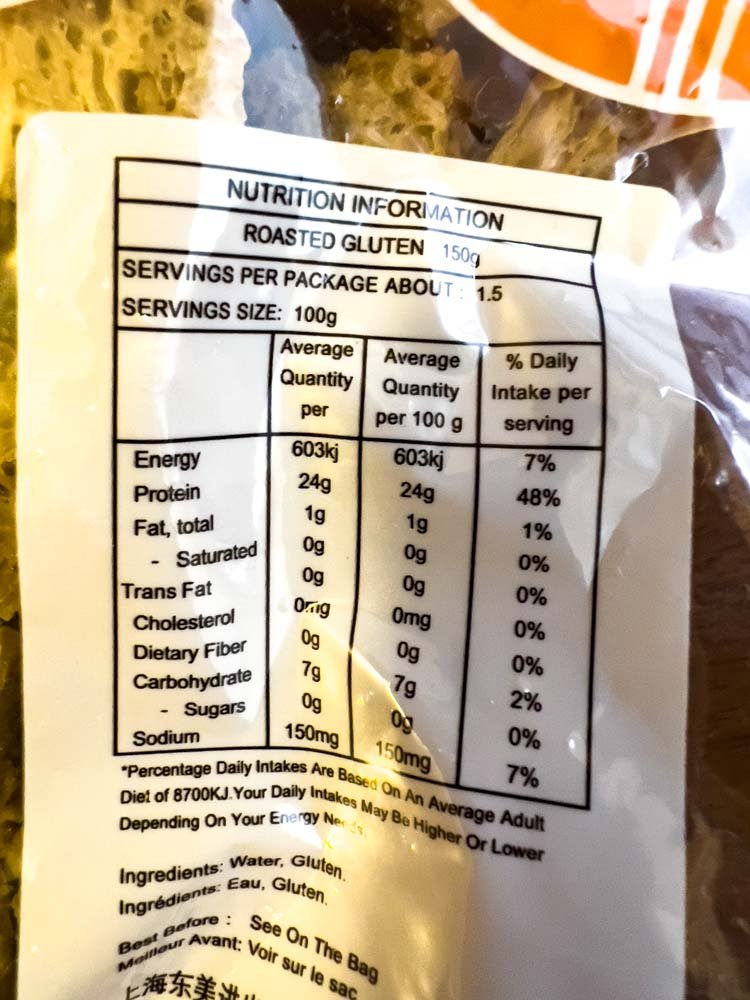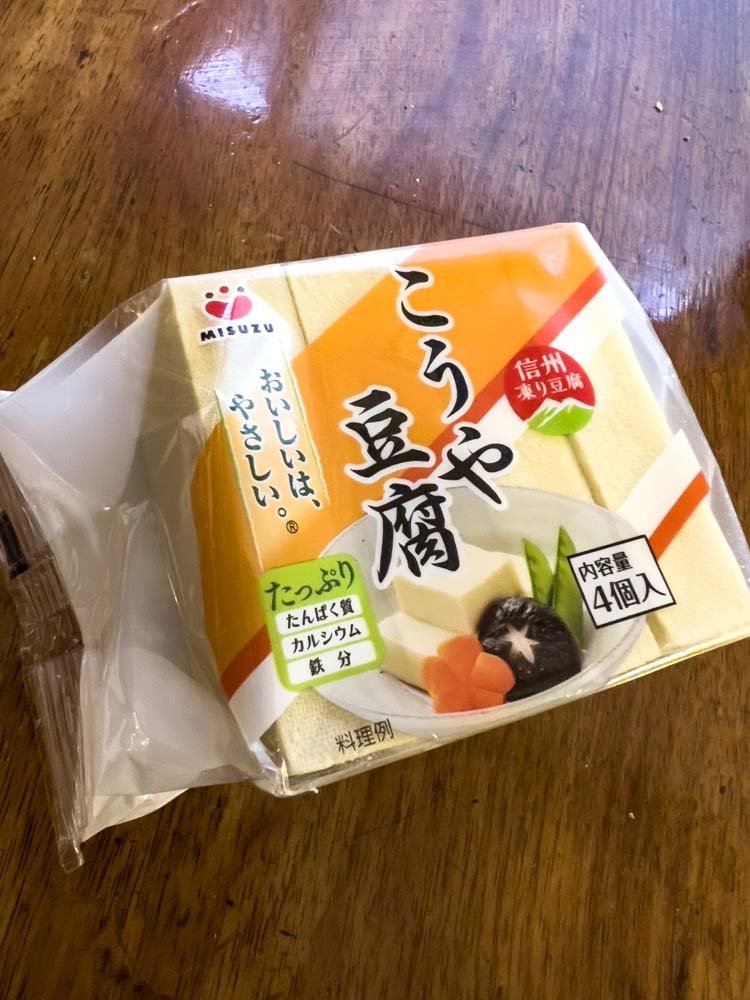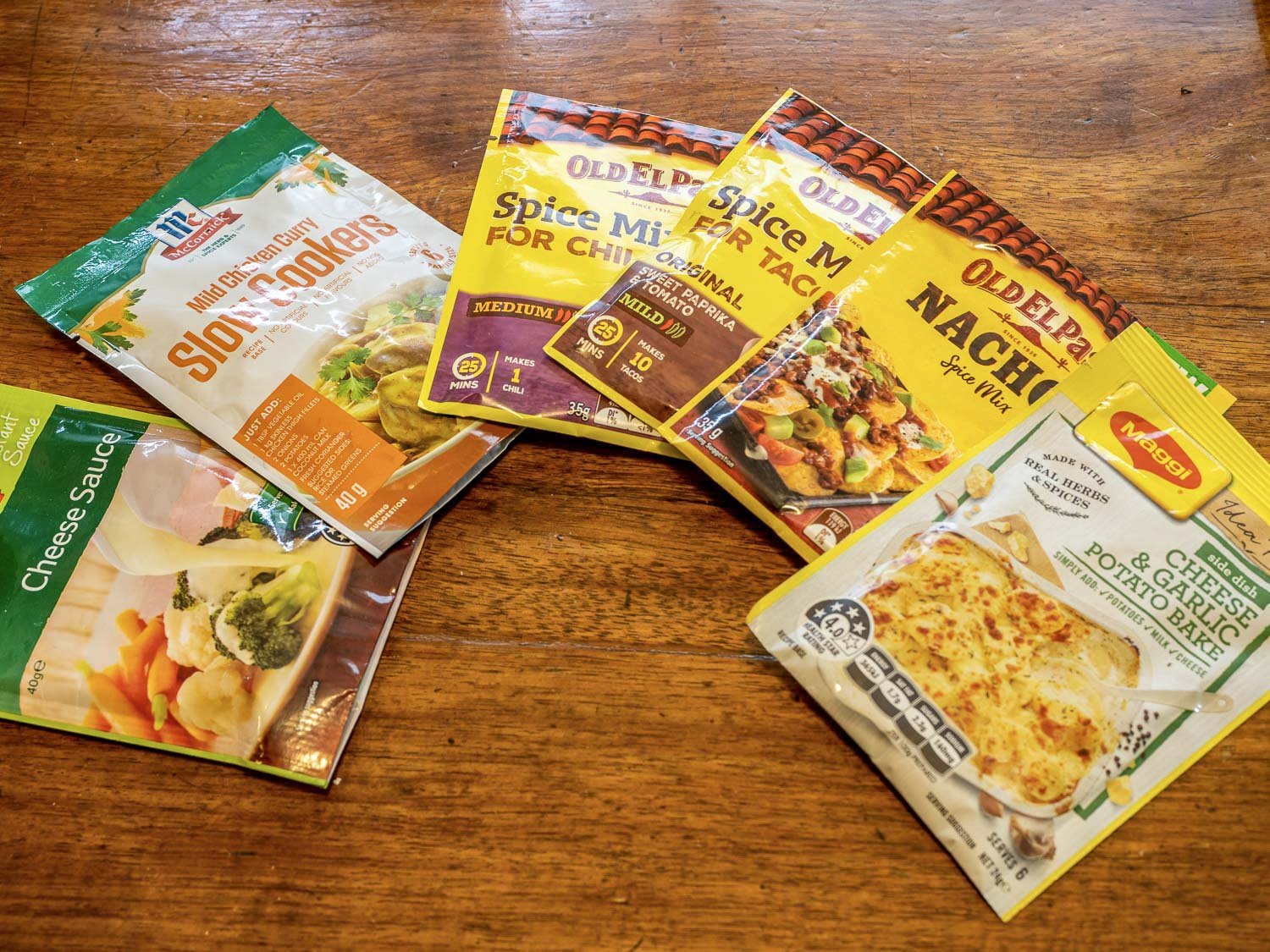What to Add to Instant Ramen Noodles: Backpacking Tips and Recipe Ideas
Two minute noodles, instant noodles or instant ramen… whatever you call them, they are light, cheap, compact, shelf-stable, delicious, readily available, convenient and easy to prepare: perfect hiker fare! Just swap those flavour sachets for condiments, and add protein and veg for quick, tasty and healthier instant noodle meals in camp.
Made of wheat (or sometimes more nutritious buckwheat, brown rice or millet), Instant Noodles were invented in the late 1950s in Japan and rapidly spread throughout the rest of Asia and around the globe. And they’re great for backpacking: our tasty Dehydrated Japanese Miso Udon recipe with seaweed, mushrooms and tofu is on the menu for every hike we do.
Adding lightweight proteins, fats, low GI carbs and vegetables to instant noodles makes them more delicious and nutritious - read on for details!
Are they Healthy?
Well no, not if they are all you eat every day. The processed wheat is high GI, meaning it is broken down quickly in the body, leading to a short spike in blood sugar rather than sustained fuel for hiking; Geoff and I really notice the difference between plain noodles and porridge. The latter when made with milk powder keeps us fuelled till lunch time; we’re hungry by mid-morning on a plain ramen breakfast. Fortunately, noodles make a perfect base for additions that fuel a more sustained curve: you can add protein, vegetables and often oil for a better balance of calories, nutrients and fibre.
The sachets included in most instant noodles are not known as Heart Attack Packs for nothing: they are usually loaded in salt and saturated fats, as well as artificial colouring and flavouring agents. Howver, dehydrating your own bone broth powder is cheaper, more nutritious and tastier than any flavour sachet.
The noodles themselves are often high in salt too. This won’t matter if you’re eating them for a week-long hike but, if you have chronic health conditions, or if you are on a multi-week or months thru-hike, check with your health professional as some brands of noodles may be inadvisable.
Healthier choices include instant whole grain, buckwheat and brown rice ramen, baked rather than fried instant ramen, those with unsaturated fats and those with less salt (but always read the labels). Throw away the flavour sachet and replace it with your own blend, and add proteins and vegetables.
Non-instant udon and many other wheat noodles take only a fraction longer to cook and can be treated in the same way as instant noodles, but have been manufactured using a different process and are much healthier. Thin dry egg noodles cook quickly, are available in all Asian supermarkets (as well as many larger Australian supermarkets ) and are another more nutritious alternative to instant ramen.
Instant noodles with dehydrated vegetables, chilli flakes and a few leftover fresh sugar snap peas from town the day before (on the Bibbulmun Track thru hike)
Choosing your Ramen
From supermarkets to the smallest corner shop, you’ll find shelves of good ol’ chicken and beef noodles but, in any local Asian supermarket, you’ll see an entire aisle of instant noodles. They may be made with different grains, flavours, serving sizes, fat/saturated/salt content, and caloric values. Baked ones are much lower in fat (but also calories).
When preparing food for our Bibbulmun Track thru-hike, we alternated between poha, porridge and instant noodles with vegetables plus protein for breakfast. I selected different noodle flavours and types from the Asian grocery so we never got tired of them. And fellow hikers often commented that the huts became like delicious Asian food stalls when we had our noodles! You can buy instant glass (mung bean) noodles, though they are relatively low in calories for hikers.
Fried instant noodles are often high in palm oil, which contributes to deforestation and habitat destruction of local peoples and endangered animals – check the label.
On their own, instant noodles aren’t an ideal nutritional strategy for thru-hikes, but they are fine for shorter trips and comprise an ideal carrier for every cuisine in the world. Use them to replace any other pasta – Italian spaghetti, Chinese noodles, German spatzle, Spanish fideos and even Balkan semolina soups – and just retain the flavour profile whilst swapping out the carbs. Our recipes generally include only fresh unprocessed ingredients but, if you’re going instant ramen, you might as well embrace them! Forget the purists: yes, you can substitute instant noodles for spaghetti with your dehydrated pasta sauce!
You can also find high protein instant noodles but taste test first asd their texture is often somewhat unpalatable. Look also for the new healthy noodles with all natural ingredients, and lower in salt.
How to Cook Ramen when Hiking
Noodle breakfast with a view on the Bibbulmun Track, Western Australia
At home, most of us pour boiling water over instant noodles and then zap them for two minutes in the microwave but clearly that’s not happening on a remote mountaintop! On a multiday hike, you have different methods for preparing noodles without additives, and with additives.
Preparing instant noodles without added dehydrated vegetables or protein:
Noodles at Conical Rocks on a paddle-hike, Tasmania
Cold soaking. This isn’t something that appeals to greedy foodies like Geoff and me, but some people pop instant ramen into a container with water to cover, let them rehydrate for 20 minutes, and eat them cold; the texture remains nicely al dente. Soba (buckwheat) noodles are delicious with their nutty flavour and are often eaten cold, but they do go gluey and horrid when cold soaked.
Boil water in pot, add noodles, return to boil and simmer two or three minutes until ready, just as you would on the stovetop at home.
(Our recommended method): Boil water in pot, add noodles, switch off and place pot in cosy for about 5 minutes (depending on noodle thickness) to rehydrate and soften. Or, add noodles to cold water and bring to the boil, then switch off; they will be ready or almost ready depending on the speed of your stove. If you prefer less watery bases, choose noodles that suit, and mix in oil and spice packs after draining.
Preparing instant noodles with additives (dehydrated vegetables, dry protein):
Dividing portions into two containers: one eats out of the pot, the other out of a soaking jar.
Cold Soaking. Cold soaking noodles comes into its own when you add things. Think Thai salads, tomato noodle salads, bean and corn salsas and more. My dehydrated vegetables take about 55 minutes to rehydrate in cold water (longer is better); freeze dried meat or vegetables need much less. So add your dehydrated vegetables and protein about half an hour before you add the noodles.
Add protein or dehydrated/freeze dried vegetables to the cold water before bringing it to the boil, then add noodles. Simmer for a few minutes and serve.
(Our recommended method): Add protein and/or dehydrated/freeze dried vegetables to the cold water before bringing it to the boil, then add noodles when water boils. Place pot into a cosy and soak 5-10 minutes. For larger serves, place noodles in a separate pouch, add the veg etc to the pot of water as above, bring to boil then pour over the noodles, seal and place in cosy. We use this method because our 1300 ml pot holds enough water for two soupy servings, but not when you add the noodles and vegetables to the pot: adding insufficient water to many soup noodles can create a slimy mess.
Rehydration time varies with types of additives, but also the proportion of water to additives; less water requires a longer soak. On our alcohol stove which takes about 13 minutes for 1000ml to come to the boil, they are ready at the same time as the noodles, but of course this depends on your cook system. Hikers with Jetboils or gas canister stoves will need to soak their additives for 10-15 mins before bringing them to the boil and adding the noodles. Switch off the fuel, place pot in a cosy and soak for about 5 minutes.
Udon noodles prepared with vegetables, seaweed and bean curd sheets added to pot before bringing water to the boil, then adding noodles.
Preparing non-soupy noodles (pad thai, bolognese, cheesy, stir-fry adaptations)
Use any of the techniques above but decant most of the water into a separate cup before adding herbs, spices, powders and oils after rehydration. Make sure you keep the decanted water though because you may need to add a little back in. Cheesy recipes need to have powder stirred in partway through warm rehydration methods and with some water still remaining. Potato and ramen ‘bomb’ recipes work better if the potato flakes, which rehydrate instantly, are stirred through at the end of your noodle soaking or cooking time.
What to Add to Ramen to make them more Nutritious
Instant noodles with home-dehydrated mixed vegetables for fibre and slow release energy, plus pork floss with laver and sesame for protein and calories. Pork floss is best in non-soupy noodles, or scattered over the top of soupy noodles to prevent the floss going sludgey.
Adding slow-release carbs and fibre in the form of vegetables plus protein greatly increases the nutritional value of instant noodles, while herbs, powdered sauces, spices and oil or fat add flavour, calories and mouthfeel. On short hikes or car camping you’ll be able to add fresh vegetables, meat, sausage and sauces, but in this article we’ll focus primarily on dehydrated, lightweight additives.
Dry Protein
Protein contains the same number of calories as carbohydrates, but is used differently in the body. Eaten together, they provide a complementary combination of fuel and muscle repair. With the exception of soy, vegetable sources of protein vary but are individually less complete than meat sources of protein and are not equivalent gram for gram. Check the backs of packs for the proportions of protein to carbs, fats, salt and sugar, and choose according to your requirements.
Of course you can add eggs, tuna sachets and fresh meats to instant noodles but the following are primarily dehydrated, freeze-dried or shelf stable, don’t require actual cooking, and all reconstitute relatively quickly if left a little longer in a cosy to finish rehydrating.
Dried or fried beancurd sheets (knots take too long to rehydrate for instant soup) are available at Asian supermarkets. Check labels: although this one lists only soybeans and water, fat has been added. The one above is 45% protein, 21% carbs and 21% fat, only 3% of which is saturated: not too bad for multiday hiking…
… but this one has just 17% protein and a whopping 64% fat of which nearly half is saturated. Palm oil is also environmentally unsound. At an astonishing 3,000+ kJ per 100g this fried curd is high in kJ, but has so much saturated fat that most people will be better off carrying a small bottle of olive oil (about 3700kJ per 100g) to add to their soup!
Roasted gluten or seitan
Roasted gluten or seitan is about 25% protein, and the rehydrated cubes have a spongey texture, a bit like bread dunked in soup, but firmer: Geoff and I find it delicious. The cubes soak up a lot of flavour and water, so you need to add more of both to account for this. If you eat this with beans, more of the gluten protein can be absorbed by the body, but it nevertheless has a relatively low conversion compared to meat protein.
TVP (textured vegetable protein, again from soy beans), including flavoured ones. TVP rehydrates in 5-10 minutes so is a great addition to instant noodles if you want a meaty texture
Freeze dried tofu: I found AUD$3 snack packs at a Japanese shop, or try the Japanese aisle in Asian supermarkets. Again, you need to add extra water when using freeze dried tofu, so experiment in a test batch at home. If buying online, google “koya tofu or koyadofu [your country]”.
The cubes are much bigger than the tiny ones you get in instant miso soup packs; I cut them up into rough smaller pieces. At 50% protein and 34% fat this is pretty good hiking food when combined with carbs.
Dehydrated tofu. You must freeze it, then partially thaw and slice very thinly to ensure it rehydrates quickly before dehydrating at 63C (145F).
Dehydrated tempeh. Marinate in whatever flavours you prefer but avoid oil. Freeze, then treat as for dehydrated tofu. Tempeh also crumbles well and can be dried in this form as well. It has a firmer, meatier texture than tofu.
Dry roasted edamame ( soy) beans - 50% protein and great scattered over Asian noodle dishes for crunch (good as a snack, too). Dried roasted chickpeas and broad beans are similar in texture but lower in protein.
Freeze dried edamame - limited availability in Australia and very expensive to buy, but a great option elsewhere. Dehydrated edamame are great in other recipes but we have found them to slow to rehydrate with instant noodles.
Jerky –softer ones cut across the grain work best. Many are around 70% protein so comprise one of the best available sources gram for gram.
Protein powders (either vegan or milk-based) - these can alter the texture of dishes, so test before packaging a large batch!
Shelf stable parmesan
Cheese powders – great in cheesy ramen recipes. In the supermarket, check the label for salt, additives and how much cheese or dairy they actually contain because different brands and types vary a lot.
Freeze dried cheeses – also great in cheesy ramen recipes, and healthier than many sachet cheese powders; also delicious eaten dry as snacks
Full fat milk powder – especially in combination with cheesy powders – will greatly boost the protein and calorie content in cheesy ramen dishes.
Powdered egg or vegan egg substitute. Remember powdered egg isn’t cooked; many hikers prefer to reconstitute it separately and scramble in a little oil before adding to their noodles. If you’re cooking rather than just rehydrating, this recipe looks good.
Dried seaweed rehydrates quickly and some varieties (red and green algae, less in brown) are surprisingly high in protein, up to 50% dry weight. Seaweed is also high in iodine and minerals – a great addition to your instant noodles; they are a key ingredient in our Japanese udon recipe.
Dehydrated sliced seafood sticks (kamaboko). Although these do contain some protein, they are higher in carbohydrate so don’t contribute significantly. Ensure the brand you use is low in fat (the one I chose was 3%, and 17% protein), slice very thinly and dehydrate at 145F/63C until crisp.
Freeze dried fish cake (Narutomaki) rehydrates instantly. Sadly no longer available in Australia from this supplier. Other suppliers, please get in touch!
Pork floss - but see captions below
Pork floss comes in different flavours and is sweet and spicy. It’s a umami blast like a flavour sachet, but with calories made up of protein, fat and sugar.
Just look at that list! At over 2,000 kJ per 100g, pork floss is extraordinarily high in thru-hiking calories. At 40% protein, 23% fat (5% saturated), 27% sugar and nearly 1400mg salt per 100g, this additive is not for everyone, but it is certainly delicious. It turns slightly sludgey if mixed in with liquid and is better sprinkled over the top of non-soupy noodles.
Dried shredded or pulled pork is available in the US
Freeze dried cooked meat (eye-wateringly expensive, not widely available in Australia; google ‘cooked freeze dried chicken’)
Bacon bits, but be aware most contain no actual bacon
Dried shrimp; you can also powder them at home
Bone broth powder (high in protein but also salt; it’s also possible to make your own so stay tuned for our recipe)
Powdered peanut butter is flavoursome and high in protein but lower in calories with much of its fat removed. It’s ideal in satay style and pad thai noodles.
Tuna sachets – these aren’t dehydrated but are nutrient dense and shelf stable
Salami - again, not dehydrated but incredibly energy dense and flavoursome. A great addition to Italian style noodles
Chinese sausage (lap cheong) - not dehydrated but shelf stable and flavoured with soy sauce and rice wine, great for Asian-style noodles
Nuts and seeds ( peanuts, sesame etc) can work well scattered over ramen dishes such as Chinese stir fry or pad Thai.
Noodles in the rain!
Oils and Fats
Adding oils and fats to ramen dishes is one of the best ways to boost calories and mouthfeel. On long hikes or thru-hikes with primarily dehydrated foods, it is almost impossible to consume sufficient calories without adding some pure oils and fats into your diet.
Olive oil. Decant into a 200-400ml ml plastic bottle
Coconut oil
Ghee or clarified butter. It lasts longer than butter but with the same flavour.
Butter – Ordinary blocks of butter melt everywhere, of course, but roadside cafes and pubs will often let you buy the small takeaway packs they provide with meals
Butter powder is not quite the same as butter (less fat, more protein) but adds flavour
Coconut milk powder – great added to Asian and Indian curries
Full fat milk powder (also adds protein and calcium)
Vegetables
Freeze Dried Vegetables
These are cheap in the US and ridiculously expensive in Australia, but they rehydrate almost instantly. Surprise freeze dried peas are available from Australian supermarkets; corn is not readily available but I found the best (still expensive) price here. Both are excellent for adding slow release carbs to ramen.
Ramen Bai* is an excellent product sadly no longer available in Australia. This product also includes tofu.
*slowerhiking were sent a free sample on request before completely inconsistent customs responses made shipping to Australia too unpredictable for the manufacturer.
Home Dehydrated Vegetables
If you dehydrate your own vegetables, this is easy. Some people dehydrate vegetables individually, and then recombine them for different recipes, which is particularly useful for ramen combos. However, I usually make different mixed batches:
Quick rehydrating vegetables for instant breakfast ramen, soups etc. Cook vegetables rather than just blanching them. This mix uses leafy greens such as kale, cavolo nero, spinach, broccoli, leek, parsley, cauliflower (very finely chopped), celery (very finely diced), and zucchini “zoodled” into thin strips using a zester. Carrot rehydrates relatively quickly if zoodled too. I sometimes add dehydrated peas and corn as here but, unless you use tinned ones, they only partially rehydrate and remain a bit chewy in the short time needed for instant ramen, and are better in longer soaked meals (see below). Freeze dried peas and corn are fantastic for instant rehydration if you want the veg ready at the same time as the noodles.
The same soup mix vegetables dried; these rehydrate in about 55 mins when cold soaked , or are rehydrated in water that takes 13 mins to boil and then put in a cosy for 5 minutes.
Carbohydrate rich cooked root vegetable mix containing potato, parsnip, carrot, sweet potato, better for longer soaks at dinner – add ramen towards the end of soak times.
Mixed blends eg Italian (onion, mushroom, zucchini, capsicum, eggplant), Thai ( snow peas, wombok, spring onion, ginger, carrot), Chinese (celery, carrot, spring onions, capsicum, peas, wombok, ginger), etc.
Thinly sliced dried mushrooms add bouncy texture and vitamins
Kimchi can be dehydrated and rehydrated to eat as a vegetable with noodles, or powdered and used as a flavouring agent, so we’ve also included it in condiments.
Purchased Dehydrated Vegetables
Buy them individually or in, say, a soup blend. Test at home to check rehydration times.
Dried thinly sliced mushrooms including black fungus, shiitake
Deb instant mashed potato flakes
Dried seaweed is seen as a flavouring in the west but many can be reconstitued and added to ramen in larger quantities as a vegetable. Some varieties are very high in protein so we’ve included seaweed in both the protein and vegetable categories
When reconstituted, dried seaweed can be eaten as a vegetable; some varieties are very high in protein.
Herbs, Spices and Condiments
Use these to create specific flavour profiles and add bling to your ramen. Nearly all of these ingredients are naturally high in umami, often MSG (which is present in many plants such as tomatoes, seaweed etc). This is why they add such a flavour boost even in small quantities. Some are high in protein and fat, useful even in small quantities when thru-hiking, where every added calorie counts.
Curry powders (Moroccan/Middle Eastern, Indian, Thai, Vietnamese, Chinese Five Spice etc) or make up your own blends using coriander, cumin, cardamon, mustard, chilli, star anise etc powders.
Tomato powder - or make your own: spread tomato paste concentrate thinly on silicone sheets and dehydrate at 57C (135F) until dry, flipping partway onto mesh. When completely dry (it will be slightly leathery), powder in a spice grinder, spread back onto a tray and dry another 10 minutes, cool then tip into a sealed jar with a dessicant sachet. Shake jar regularly for the first week to redistribute any remaining moisture. Alternatively, cut leather into squares and store in a sealed jar with a dessicant sachet.
Balachaung. This delicious dried garlic, shrimp, onion and chilli mix is fantastic sprinkled over pretty much anything. Brands vary; the one I have is about 18% fat, 20% protein, 3% sugar, and 7% carbs, not bad for a calorie sprinkle on thru-hikes. The flavour profile works with Asian, Indian and some Middle Eastern dishes, or added to anything bland.
Japanese Furikake - the Japanese version of balachaung. Furikake varies in its ingredients, but the relatively expensive spicy blend I use contains black sesame seeds, onion, garlic, chilli and salt (1110kJ per 100g, 11% protein, 12% fat, and 22% carbs). Brands with dried bonito (katsuiboshi) will be higher in protein and have the traditional flavour. Use it sprinkled over anything bland such as plain rice, couscous or noodles.
Onion, garlic and ginger powders
Dried fried onions (supermarket Asian section)
Mixed dried herbs – try Italian, Spanish, Thai blends
Dehydrated herbs (parsley, spring onion, coriander and/or basil – they all rehydrate almost instantly)
Commercial stock powders. Note that all stock cubes and powders are high in salt. Australian Massel brand cubes (beef, chicken, vegetable, laksa, rasam or pho) are still high in salt, but have no artificial colours or flavours.
Massel brand stock cubes make a delicious flavour base but are high in salt
Massel laksa cubes
Home-made bone broth stock powder of chicken, beef or vegetable!
Bonito stock powder and bonito flakes or katsuobushi (bonito are related to tuna but are sustainable)
Kelp powder and granules are very high in umami and minerals. Cheap kelp granules often have fillers added but are much cheaper than pure kelp powders. However, a little of the latter goes a long way, so it is not as expensive as it might seem.
Dashi stock is a mixture of bonito and kelp and is the chicken stock cube of Japan. Some have no added MSG.
Yeast extract (think: Vegemite or Marmite) is naturally high in MSG and can be bought in powdered form; it is NOT the same as nutritional yeast. Because it’s fermented, it adds the same kind of strong umami flavour as miso powder. It can be used as a substitute for beef stock cubes or cheese flavouring.
Miso powder. It’s expensive; buy instant soup sachets or, even better, dehydrate paste at home. Just spread very thinly on a silicone sheet or baking paper and dehydrate at 42-46C (105-115F) until completely dry, flipping onto mesh as soon as it peels off cleanly. When completely dry, powder in a spice grinder, spread back onto a tray and dry another 10 minutes, then cool and tip into a sealed jar with a dessicant sachet. Shake jar regularly for the first week to redistribute any remaining moisture. Use instead of spice sachet or stock cube, doubling or tripling quantity.
dehydrated kimchi or sauerkraut add a fantastic flavour punch to noodles and are also great powdered; dehydrate at 57C (135F)
Dried hot chillies, paprika, smoky paprika, cumin, coriander
Soy sauce (save the tiny bottles that come with sushi and sashimi, or buy a handful from the sushi shop) or soy sauce powder
Fermented fish powder (use instead of fish sauce)
Cup a Soup sachets eg Spring Vegetable, cream of Chicken
Commercial flavour sachets eg Mexican, cheese, Thai, etc.
Mini salad dressing, tomato sauce, barbecue sauce, honey sachets or packs provided by takeaway shops, motels abd B&Bs; they will often sell you a handful of them if you ask.
Many of these flavour sachets work with instant noodles but check the labels for ingredients if you need to watch salt intake.
Recipe Ideas:
Once you consider the above protein, vegetable and bling additions, you realise the combinations are endless. We’ll be adding specific recipes but here are just a few ideas with a range of potential ingredients to achieve desired flavour and nutritional profiles:
Noodles with vegetables in Iceland.
Italian noodles: tvp, freeze-dried beef, salami or jerky, beef flavour/stock/bone broth, dried mushrooms, dried capsicum, dried zucchini, tomato powder, onion powder, garlic powder, dried parsley, basil and oregano (or Italian herb blend), olive oil and shelf stable parmesan or freeze dried cheese.
Laksa Noodles: laksa stock cube, coconut milk powder, seaweed, dried cabbage, broccoli or kale, zoodled carrot or zucchini, dried shrimp, dried coriander, mint, lemon or lime powder, fermented fish powder, freeze dried tofu/bean curd sheets/tuna sachet.
Vietnamese pho Noodles: soy sauce and/or fermented fish powder, pho stock cube, jerky or roasted gluten or bean curd sheets, dried spring onion, coriander, parsley and mint leaves, dehydrated vegetables
Cheesy Noodles: milk powder, cheese powder, onion and garlic powder, freeze dried chicken or bacon bits or salami or protein powder, dried parsley and/ or spring onion, yeast extract, shelf stable parmesan or freeze dried cheeses, ghee
Japanese Udon - Another noodle flavourite!
Japanese miso udon noodles: - soy sauce, miso, bonito and kelp powders, seaweed, dried mushrooms, tofu or roasted gluten or bean curd sheets or tuna sachet
Minestrone Noodles: TVP or freeze dried chicken, tomato powder, dried mushrooms, dehydrated or freeze dried vegetables, yeast extract, garlic powder, onion powder, olive oil, freeze dried cheese or parmesan
Green Curry Noodles: TVP, freeze dried tofu or bean curd sheets, chicken flavour, dried spring onion, dried broccoli, dried coriander and parsley leaves, coconut milk powder, fermented fish powder, green curry spice blend sachet, lemon or lime powder. Or, for a complete dehydrated meal, our Green Chicken Curry recipe will work with any instant noodles.
Indian Curry: Indian spice mix, TVP, freeze dried or dehydrated tofu or jerky, protein powder, tomato powder, chilli powder, ginger, cumin and coriander powders, dried mixed vegetables, dried fried onions, ghee
Pad Thai Rice Noodles: soy sauce, chicken stock powder, fermented fish powder, peanut butter powder, onion powder, garlic powder, tamarind powder, dried spring onion, coriander and chilli, pad thai sachet, lemon powder, sugar, olive oil; tvp, crushed peanuts or dried roasted chickpeas or edamame, egg powder reconstituted and scrambled in a little oil.
Breakfast noodles with a marvellous view below Dutchman’s Stern, Flinders Ranges, South Australia




